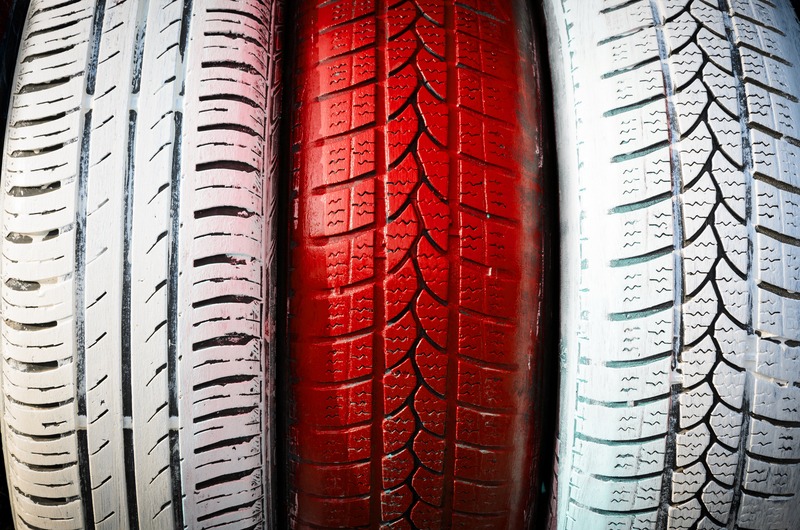Organizing Group Pickups for Oversized Items: A Comprehensive Guide
Are you struggling to dispose of large, unwanted items? Organizing group pickups for oversized items is an eco-friendly, cost-effective, and efficient solution. Whether you're planning a neighborhood clean-up, commercial property decluttering, or managing multi-unit dwellings, learning how to coordinate bulk item removals can benefit your entire community. In this in-depth article, you will discover strategic tips, best practices, and creative ideas to optimize your oversized item group pickups.

Why Organize Group Pickups for Large Item Removal?
*Oversized items*--such as furniture, appliances, mattresses, or yard debris--aren't always accepted by regular curbside trash collection. **Group pickups** offer a unique solution for individuals and communities that wish to:
- Reduce Waste Removal Costs: By pooling resources, participants can split pickup fees.
- Encourage Recycling and Proper Disposal: Coordinated events promote environmental responsibility.
- Keep Communities Clutter-Free: Regular pickups help maintain a clean and safe environment.
- Foster Neighborhood Collaboration: Shared activities bring neighbors together for a common cause.
Coordinating a group pickup for large items fosters a sense of community and boosts sustainability efforts.
Steps to Organize a Bulk Pickup for Oversized Items
Ready to launch a group effort to remove unwanted large objects? Following these actionable steps will streamline the process and maximize participation and impact.
1. Assess the Need for Oversized Item Collection
Begin by identifying the *scope of the problem*:
- Survey your building, block, or neighborhood for residents needing to dispose of oversized items.
- Ask about the types and quantities of items needing removal; common examples include sofas, appliances, or e-waste.
- Note any hazardous or restricted items that require special disposal procedures.
2. Choose a Collection Date and Time
Selecting an optimal date for your group pickup event is crucial for maximum participation. Consider:
- Weekend Mornings: Typically, more residents are available to help and move items.
- Local Events: Align pickups with neighborhood garage sales or seasonal cleaning schedules.
- Bulk Pickup Schedules: Check if your local waste management offers designated days for large-item collection.
3. Partner with Waste Management or Private Haulers
Collaborate with reliable junk removal companies or municipal waste services. When choosing a provider:
- Request quotes for group large-item pickups.
- Inquire about accepted items, recycling practices, and environmental fees.
- Ask if donation or resale options are available for gently used items.
4. Communicate and Promote the Event
Effective communication drives participation--use multiple methods to spread the word:
- Create flyers or door hangers with collection details.
- Email residents and post updates in community portals or building lobbies.
- Use social media groups or neighborhood apps to announce the oversized item pickup event.
5. Organize Volunteers and Assign Roles
A successful community bulk item removal relies on teamwork. Appoint volunteers for tasks such as:
- Coordinating schedules and handling sign-ups.
- Helping residents move heavy items to designated pickup locations.
- Supervising the event on collection day and ensuring safety protocols.
Maximizing Efficiency With Coordinated Group Pickups
Streamline the Process With Preparation
Preparation is key to avoid chaos during the pickup event. Plan ahead using this checklist:
- Mark a central collection point for oversized waste pickups--such as a parking lot or street corner.
- Label items with participant names or apartment numbers for accountability.
- Bundle or break down items (as allowed) to save space and speed up loading.
Ensure Safety During Collection
Handling bulky and potentially dangerous items requires caution:
- Encourage participants to use gloves, back supports, and appropriate footwear.
- Do not allow children in collection areas during heavy item moving.
- Coordinate with haulers who have insurance in the event of injury or property damage.
Maintain Compliance with Local Rules and Regulations
Every city handles oversized item disposal differently:
- Research municipal laws regarding curbside placement, weight limits, and prohibited items.
- Secure permits if required for blocking streets or using public spaces.
- Keep records of all items collected for reporting or grant purposes.
Promoting Sustainability: Reuse, Recycle, and Donate
Not all large item group pickups end in the landfill. Encourage alternatives to traditional waste disposal:
- Donation Drives: Partner with local charities to accept furniture, electronics, and appliances in good condition.
- Online Marketplaces: Allow neighbors to sell or gift unwanted large items before pickup day.
- Recycling Stations: Set up collection bins for items like metal, wood, or electronics that can be diverted from landfills.
By integrating donation and recycling options, you promote a circular economy and reduce environmental impact.
Benefits of Group Pickups for Oversized Items
Choosing to coordinate a group pickup over individual disposal methods offers substantial advantages:
- Cost Savings: Splitting costs between participants lowers individual expenses for dumpster rentals or junk removal services.
- Community Engagement: Bringing people together for a common goal strengthens community bonds.
- Cleaner Environment: Regular large item collections prevent illegal dumping and visual clutter in shared spaces.
- Streamlined Logistics: One organized pickup is more efficient than multiple uncoordinated drop-offs.
Common Challenges and Solutions in Organizing Bulk Group Pickups
1. Scheduling Conflicts
Solution: Poll participants in advance to choose dates and send multiple reminders in the weeks leading up to the event.
2. Item Restrictions
Solution: Provide a clear list of acceptable and non-acceptable items. Offer resources for alternative disposal.
3. Limited Participation
Solution: Offer incentives, such as raffle prizes or snacks, to boost community interest in the *group large item pickup* event.
4. Heavy Lifting and Injury Risks
Solution: Hire professional movers for the heaviest items or invest in dollies and lifting straps for safe handling.
Technology Tools to Simplify Oversized Item Pickups
Modern platforms and apps make organizing community bulk pickups easier than ever:
- Doodle Polls or Google Forms: Gather information on which neighbors plan to participate and what items they will contribute.
- WhatsApp or Nextdoor: Build group chats to coordinate details in real time.
- Shared Online Calendars: Schedule pickup times and volunteer shifts to ensure smooth logistics.
Frequently Asked Questions About Group Oversized Item Collection
What counts as oversized or bulk items?
*Oversized items* usually refer to things too large for regular trash bins or curbside disposal, such as mattresses, old couches, appliances, doors, and yard debris.
How do I find a group pickup service in my area?
Start by searching for "bulk item pickup near me" or consulting your city's sanitation department. Private junk removal services often offer group discounts for community events.
Can I organize a group pickup for my apartment complex?
Yes! Property managers and tenant associations frequently organize community oversized item pickups to keep shared spaces neat and minimize tenant turnover costs.
What are the environmental benefits of a group pickup?
These events maximize recycling and donation efforts, reducing landfill waste and encouraging responsible oversized item disposal.
Best Practices for a Successful Group Pickup Event
- Start Planning Early: Give neighbors at least two weeks' notice to prepare items for removal.
- Be Inclusive: Invite renters, homeowners, and local businesses to participate for maximum volume and savings.
- Track Participation: Keep a volunteer and item log for future reference and to build momentum for annual events.
- Celebrate Success: Share before-and-after photos and circulate thank-you notes to everyone involved.

Case Studies: Inspiring Examples of Oversized Item Group Collections
Neighborhood Bulk Pickup Success
In a mid-sized urban neighborhood, a volunteer committee organized a *community-wide oversized item collection*. By pooling resources, they saved $1,500 on dumpster fees and diverted 500 lbs of items to charity.
Apartment Complex Spring Clean
A 60-unit complex hosted a spring bulk waste pickup event, removing years of clutter from storage areas and lawns. The event improved curb appeal and increased rental renewals.
Conclusion: Transform Your Community Through Organized Group Pickups
Organizing group pickups for oversized items is more than just managing waste; it's a way to unite neighbors, save money, and promote responsible disposal. By following the steps detailed in this guide, you can create a safer, cleaner, and more sustainable community. Whether you live in a tight-knit suburb, a bustling city, or a multi-family building, the benefits of well-coordinated bulk item pickups are undeniable.
Ready to take action? Start by assessing your community's needs, enlisting support, and scheduling your first group oversized item pickup--your neighborhood will thank you!